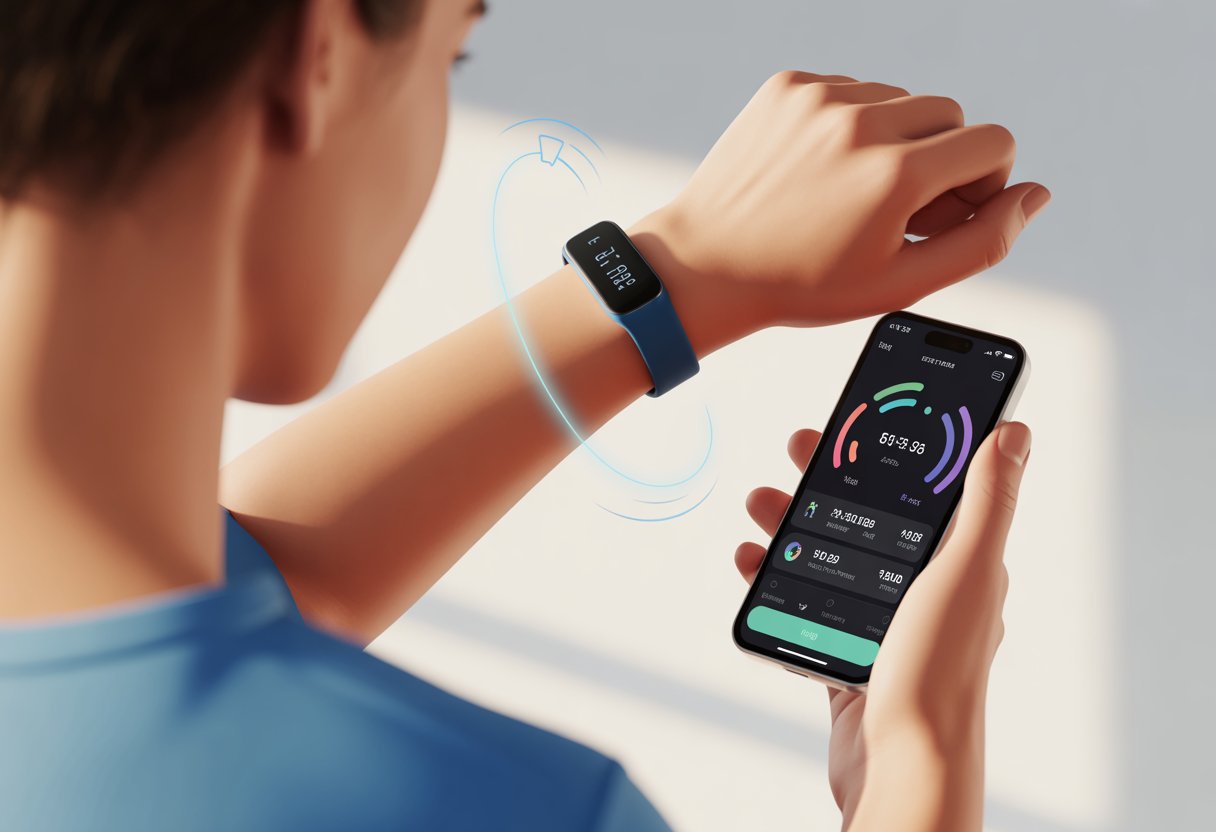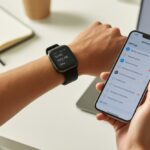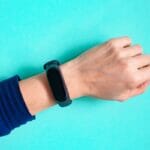Do you ever get sick of counting steps in your head all day? Honestly, same here. Thanks to modern gadgets, a fitness tracker can do all the counting for us, and with the Fitbit app, tracking our health actually turns into something kind of fun.

The Fitbit app lets us connect our tracker, watch our steps, track workouts, and even challenge friends—all from our phones and that trusty device on our wrist. Suddenly, checking our stats feels as natural as checking our texts, and let’s be real, we might brag a bit when we hit those step goals.
Whether we’re rocking an official Fitbit or just using our phone, syncing up is easy and unlocks all the features. If we want to turn our daily movement into real numbers instead of just vague guesses, this is where we dive in.
No Fitbit device? No problem. We can use the app to turn our phone into a tracker—so, really, there’s no excuse to skip that walk. To see how to set it up and track our progress step by step, check out this guide on using your phone as your fitness tracker with the Fitbit app.
Getting Started With Your Fitness Tracker
Setting up a new fitness tracker honestly feels like inviting a tiny robot into our routine. We want something that fits our needs, feels easy to use, and doesn’t make our wrist look like it’s carrying a kitchen appliance.
Choosing the Right Fitbit Device
Let’s play matchmaker for wrists. Fitbit offers a bunch of options, from the basic fitness tracker band to a full-on smartwatch. If steps and sleep are all we care about, the Fitbit Charge 2 is a solid pick—think of it as a friendly assistant counting every step, not judging our snack choices.
Want more? On-screen workouts, a bigger display, or pretending we’re super popular with text notifications? The Fitbit Versa 2 covers that. It works with Android devices and iPhones (iOS), so everyone gets to join the step-counting fun.
Fitbit also makes smaller options for kids or folks with tiny wrists. Let’s be honest, picking the color is half the fun.
Quick Tips:
- Fitness tracker band = simple
- Smartwatch = extra features
- Double-check that it works with our phone (Android or iPhone)
- Comfort and size actually matter
Setting Up Your Fitness Tracker
Once we pick our device and admire it for a minute, it’s setup time. Start by charging the tracker—nobody wants a dead gadget. Most trackers come with a USB charging cable, so stash it somewhere we’ll actually remember.
Download the Fitbit app from the Apple App Store or Google Play Store. If we don’t have an account, we’ll need to make one. The app asks a few basics, like our age and height, but never anything too personal (like, say, our laundry pile).
Before tracking can start, we enter our goals, notification preferences, and which wrist we’ll use (lefties, this is your moment). Most setup guides in the app are pretty clear, but if we get stuck, the official manual has helpful pictures.
Pairing With Your Phone
Here comes the high-tech handshake. We’ll turn on Bluetooth, open the Fitbit app, and tap Join Fitbit or Set Up a Device. The app searches for our device using Bluetooth Low Energy (BLE)—basically, it’s whispering, “Hey, you there?”
Once the app finds our tracker, it’ll ask for a pairing code from the tracker’s screen. We pop in the code, and if all goes well, data starts syncing like magic (or, you know, BLE tech). If the app and tracker don’t see each other right away, don’t panic—sometimes they just need a second, or maybe we need to move the tracker closer.
When pairing finishes, the app displays our steps, heart rate, and even our sleep (or lack thereof). This process works pretty much the same for most models, whether we’re using the Charge or Versa, on Android or iOS. If we ever swap phones or get a new tracker, we just repeat these steps—hopefully without losing our step count.
Installing and Setting Up the Fitbit App
Before our Fitbit device can start tracking every step (and, let’s be real, every donut run), we need to get the Fitbit app ready. It’s just about finding the app, saying yes to a few things, and letting the app know who we are.
Downloading the App
Let’s make our phone smarter. If we’ve got an iPhone, head to the App Store. Android users, open the Google Play Store. Search for “Fitbit app” and hit download or install. That’s it—no puzzles or hoops.
The download only takes a minute or two. Once it’s done, open the app so we can keep things moving.
Want to check for updates later? Just swing back into the app store, tap “My apps,” and hit “Update” if it shows up. For more help, there’s a handy video walkthrough that shows exactly how to install and set up the Fitbit app.
Giving the Right Permissions
The Fitbit app is a bit nosy, but for good reason. It needs permissions—tracking steps, using Bluetooth, sending notifications. iPhone or Android, we’ll get pop-ups as we go.
Here’s what we might see:
- Bluetooth: Needed for syncing our Fitbit tracker
- Location: Needed for some tracking features
- Notifications: So we get nudges and step goal alerts
If we want the full Fitbit experience, we should say yes. If we put it off, some features just won’t work right.
Creating and Syncing Your Fitbit Account
Now it’s time to share a little about ourselves (no toddler photos required). We’ll either create a new Fitbit account or sign in if we already have one. This keeps our stats synced across devices.
Setting up the account is simple: just email and password. Then we pick our Fitbit device from the list (Inspire, Charge, Versa, etc.). The app walks us through pairing—usually just Bluetooth and a couple taps.
Once set up, syncing happens automatically. If the data doesn’t update, we can tap the sync button in device settings. For extra help, there’s a step-by-step guide on connecting a Fitbit tracker.
Syncing Your Fitness Tracker With Fitbit App
Let’s be honest—if our data doesn’t sync, did our steps even happen? Syncing keeps the Fitbit app updated and lets us track progress, but sometimes tech just wants to mess with us.
How Syncing Works
Syncing is like sending step info down an invisible zipline from our tracker to the Fitbit app. That’s how we get the numbers, the graphs, and, honestly, our bragging rights.
Here’s how to make it work:
- Turn on Bluetooth on our phone. That’s our secret handshake with the tracker.
- Open the Fitbit app. Usually, it starts looking for the tracker right away. Sometimes we have to pull down the dashboard to refresh.
- Keep the device close—no syncing from another room.
- If we’re pairing for the first time, follow the prompts in the app.
The app grabs steps, heart rate, and other stats. It’s instant feedback—sometimes motivating, sometimes a little guilt-inducing.
Troubleshooting Sync Issues
If our tracker and app aren’t playing nice, it’s time to troubleshoot. First, check that Bluetooth is on. No Bluetooth, no syncing.
Next, try the classic: turn the tracker and phone off, then back on. It’s basic, but it works more often than we’d expect.
Still stuck? Try these:
- Make sure the Fitbit app is up to date.
- Keep the tracker close—walls and fridges don’t help.
- Sign out and back into the Fitbit app.
If nothing works, deleting and reinstalling the app can give things a fresh start. There’s a Fitbit syncing tutorial if we need more help. Sometimes, the tracker just wants a little break.
Tracking Your Daily Activity
Wearing a fitness tracker with the Fitbit app means we get a bunch of numbers—steps, distance, cardio stats, and more. These stats help us move smarter, not just more.
Steps Taken and Distance Covered
Nothing beats seeing a big step count on the Fitbit app. The tracker logs every step, from fridge trips to heroic stair climbs. Those steps add up to a total distance, so we can see how active we really are.
We’ll find steps and distance on the Today tab. Scroll to see daily, weekly, or monthly stats. If we want more detail, tap into hourly tracking. If something looks off, we can adjust activities or check our step and distance info.
Want to out-step our friends? The app ranks us for a bit of friendly competition. For the best accuracy, wear the device correctly and keep profile info updated—otherwise, our stride length might get a little wild.
Active Zone Minutes and Cardio Fitness
Fitbit does way more than just count steps. Our tracker keeps an eye on Active Zone Minutes, which we rack up when our heart rate hits certain zones during exercise.
The more time we spend in zones like Fat Burn, Cardio, or Peak, the more points we snag. Active Zone Minutes focus on how hard we work out, not just how long.
We can check these numbers live on our device or in the app. It’s always just a quick glance away—perfect for bragging.
Tracking these minutes gives us a little push to go harder, like picking up the pace when someone’s right behind us at the park.
Cardio fitness is another cool perk. Our tracker estimates our VO2 Max, basically showing how well our body uses oxygen during exercise.
A higher number here means we might actually outrun our neighbor’s dog—well, at least on paper.
Calories Burned
Let’s get real—everybody wants to know if their workout earned that second cookie. Our tracker estimates calories burned using steps, heart rate, weight, age, and gender.
These numbers shift all day, even when we’re just chilling, since our bodies burn calories even at rest.
We can check our total calories burned in the app, whenever curiosity hits. Want more details? The app breaks it down by exercise, steps, and even resting calories.
The more accurate our info, the better the calorie estimate. If our tracker has GPS features, location data helps dial in calorie burn for outdoor stuff.
Tracking calories isn’t just about food guilt—it’s about knowing our activity level and, honestly, maybe justifying a slice of cake every so often.
Monitoring Workouts and Exercise
We want our tracker to do more than just look good on our wrist. Let’s see how it keeps tabs on our routines, outdoor adventures, and cardio sessions with real-time stats—and sometimes a little attitude.
Logging Workouts
Let’s be honest—if we don’t log it, did it even happen? With the Fitbit app, we can record anything from stretches to HIIT.
We just open the app, hit the exercise tile on the Today tab, and tap the plus sign (+) to add a workout. Pick the type, add details like duration and calories, and we’re set.
Fitbit’s automatic exercise detection (SmartTrack) has our back. It logs activities like walks, runs, or bike rides without us lifting a finger.
We can check and manage these auto-tracked workouts in the app’s exercise screen, so even that sprint for the ice cream truck shows up. For more, see the Fitbit guide to tracking activities with your Fitbit device.
Using GPS for Outdoor Activities
GPS makes us feel like pros, even if we’re just dodging a squirrel. Many Fitbits have built-in GPS.
We just start an outdoor workout—walking, running, biking—and our route, pace, and elevation get mapped. If our device lacks GPS, we can use our phone’s GPS by connecting it through the app.
With GPS on, we get real-time stats—distance, pace, and a map of our “epic” journey when we’re done. Average speed? Yep, that’s there too, so we can brag at family dinners.
Cycling and Running Insights
Cycling and running get way more interesting when we have numbers to geek out over. Fitbit tracks real-time pace, average speed, and heart rate zones.
For cycling, we see distance, time, speed, and calories burned. Runners get all that, plus pace splits, elevation, and reminders when we smash a record.
We can review our rides and runs in the Exercise section of the app. Everything’s laid out simply—no math degree needed.
Need tips? The Fitbit app community is full of advice on tracking cycling or running workouts in our official discussion forum.
Heart Rate and Health Metrics
With a Fitbit, tracking heart rate and health stats isn’t just for athletes or doctors. We use this info to make better choices about activity, rest, and, honestly, how often we raid the snack drawer.
Continuous Heart Rate Tracking
Continuous heart rate tracking makes our Fitbit feel like a tiny lifeguard on our wrist. The tracker uses green LEDs and sensors to read blood flow and figure out our heart rate every second—even if we’re just eating tacos or watching TV.
We don’t just get a snapshot; we get the whole movie of our heart’s activity. The Fitbit app shows our heart rate live and spots trends throughout the day.
It’s definitely more accurate than counting our own pulse after chasing the dog. Curious how this works? Check out how Fitbit trackers monitor heart rate.
This data helps us notice spikes, slowdowns, or odd patterns that might matter for our health. It also tells us how hard we’re working during exercise, so our bragging rights come with proof.
Understanding Resting Heart Rate
Resting heart rate (RHR) is our heart’s beats per minute when we’re at our laziest—think couch potato mode. A lower RHR usually means a healthier heart, while a higher one could mean it’s time to cut back on those late-night gaming marathons.
Fitbit tracks our RHR automatically when we’re calm and still, like when we’re asleep or debating getting out of bed. The app shows our RHR trends in easy-to-read charts so we can spot changes over days, weeks, or months.
If our RHR suddenly jumps, it might mean stress, illness, or just too much coffee. The Fitbit app makes it simple to check our RHR each day and see how we compare to healthy ranges.
Interpreting Cardio Fitness Scores
Cardio fitness score is Fitbit’s way of giving us a heart and lung report card. It uses heart rate data, age, weight, and a few other stats to estimate our VO2 max—basically, how much oxygen we can use during exercise.
A higher score means our cardio fitness is better. Fitbit even compares our score to others our age and gender, so we can see how we stack up.
If we want to see progress or show off on social media, the app tracks our score trends over time. We can find this score in the app, usually on the “Health Metrics” or “Heart” page, depending on our device.
On the Fitbit Charge 2, for example, it’s right there and easy to check as our fitness changes.
Tracking Sleep and Recovery
We count on our tracker and the Fitbit app to help us get better sleep and actually understand how well we rest. By looking at sleep stages, checking our sleep score, and using sleep mode, we get way more insight than just “did I sleep?”
Measuring Sleep Stages
Our Fitbit jumps into action the moment we hit the pillow—no superhero cape needed. It tracks movement, heart rate, and oxygen levels all night to see how much time we spend in light, deep, and REM sleep.
These stages make up our nightly cycle. If we wake up feeling like a zombie, the charts in the Fitbit app can show if deep sleep was missing.
Inside the app, the sleep timeline shows when we’re tossing, turning, or deep in dreamland. We can even hold the graph to see specific moments of rest or restlessness, which helps us spot trends.
With all this info, we’re a step closer to figuring out why Mondays always hit so hard. Want more? Details about Fitbit sleep stages are just a tap away.
Using Sleep Score
Ever wish you got a grade for sleeping? The Fitbit app gives our sleep a score from 0 to 100 each night.
It combines how long we slept, how restful it was, and how much we moved during the night. Higher score? We probably feel better when the alarm goes off.
We get a breakdown in the morning showing where we rocked it (champion dreamer?) and where we could do better (midnight snack, anyone?). The sleep score even offers tips based on our trends—like going to bed earlier or ditching screens before sleep.
Enabling Sleep Mode
Sleep mode is for anyone who doesn’t want their tracker buzzing every time they wander to the bathroom at 3 a.m. When we enable sleep mode, notifications go silent, the screen dims, and our beauty rest isn’t interrupted by random buzzes.
We can turn on sleep mode by swiping on our Fitbit or using the app settings. There’s even an option to set a regular schedule, so sleep mode kicks in and out at the right times.
If we let sleep mode run on autopilot, our groggy morning selves will be grateful. For more, check out this guide to using your Fitbit for sleep tracking.
Personalization and Features
Personalizing our fitness tracker with the Fitbit app makes things more fun and keeps us motivated. Whether we change up the display or get buzzed when we’re sitting too long, there are plenty of ways to make our tracker feel like it’s actually ours.
Customizing Clock Faces
Let’s be real, staring at the same clock face gets old. Good news—the Fitbit app lets us swap out clock faces whenever we want.
Some show steps and heart rate right up front. Others go for a classic look, perfect for pretending we’re classy.
To change the clock face, we open the app, tap our device at the top left, and pick Clock Faces. The gallery has designs from sporty to silly.
We can even show off our step count in giant numbers—bragging made easy on family walks. Some faces also let us pick colors or arrange what’s on display.
That way, we see exactly what matters most, whether it’s steps, calories, or, you know, the time.
Setting Up Silent Alarms
Nobody likes being blasted awake by a loud alarm. Silent alarms use gentle vibrations to get us up without scaring the dog or waking the whole house.
They’re perfect for power naps, workout reminders, or feeling like a secret agent with a wrist buzzer. To set one, we open the Fitbit app, tap our tracker, and go to Alarms.
Pick a time, set repeat days if needed, and save. Our wrist will do a happy dance when it’s time to wake up or move.
We can snooze or turn off silent alarms right from the tracker. They’re great for reminders about appointments, meds, or escaping boring meetings.
Enabling Reminders to Move
Sometimes, we all need a nudge to stop binge-watching. Reminders to move make sure we hit at least 250 steps an hour, turning our tracker into a friendly drill sergeant.
The Fitbit app lets us set these reminders for certain hours—basically, whenever we’re most likely to turn into couch potatoes. We can customize reminders by heading into app settings and picking the hours.
Our tracker vibrates and flashes a quick message if we need to get up and stretch. Skip too many reminders? The tracker keeps count (no judgment… well, maybe a little).
At least every buzz is a little encouragement to keep moving.
Finding and Using Timers
Ever need to count down the seconds until your pizza’s ready, or time a workout that leaves you gasping? Good news: most fitness trackers come with timers and stopwatch features built right in. No more hunting for your phone’s timer app—these tools are strapped to your wrist.
Just open the tracker’s menu, tap Timers, and pick between a countdown or stopwatch. For workouts, set the timer to match your circuit or rest breaks. For snacks, well, at least your tracker keeps you honest (even if you ignore it).
When time runs out, the tracker vibrates—no more burned cookies or missed sprints. It’s surprisingly satisfying to have a timer buzzing on your wrist, leaving you with zero excuses to slack off.
Notifications and Communication
Let’s be real—if your wrist can buzz whenever Aunt Linda texts or a calendar event pops up, why not use it? The Fitbit app lets you manage notifications, and you can use Water Lock or Do Not Disturb to keep things peaceful or splash-proof.
Managing App Notifications
Sometimes, it feels like your wrist is more popular than you are. Fitbit can alert you to calls, texts, calendar events, and even app notifications (yes, Candy Crush included). To set this up:
- Open the Fitbit app and tap your profile picture.
- Scroll down and tap Notifications.
- Pick which apps and alerts you want on your device.
Want to be selective? You can toggle notifications for calls, texts, calendar events, and almost any app. Android users can follow this step-by-step guide for more details.
Some models, like the Charge 5, need extra permissions on your phone. If setup feels trickier than building flat-pack furniture, check out this YouTube walkthrough.
Water Lock and Do Not Disturb
Sometimes your wrist deserves a break—especially during laps in the pool or a much-needed nap. That’s where Water Lock and Do Not Disturb (DND) step in.
Water Lock keeps splashes from triggering accidental taps. Swipe down, tap Water Lock, and you’re set for a swim without sending random emojis. Touch sensitivity turns off until you unlock it again.
Do Not Disturb (DND) is perfect for meetings or power naps. Activate it on your tracker or in the app, and all non-urgent notifications take a timeout. You won’t get buzzed until you’re ready for the world again.
Using Water Lock or DND isn’t rocket science, but it feels like a luxury. No more phantom notifications during laps or naps—you’ll only get buzzed when you actually want to.
Extending Battery Life and Device Care
If your Fitbit dies halfway through the day or starts itching your wrist, the whole fitness plan takes a nosedive. A little device care helps you keep tracking steps, minus the irritation.
Maximizing Battery Performance
Few things are as annoying as a low battery warning right before a workout. To make your Fitbit last, dim the screen or turn on auto-brightness. On models like Charge and Inspire, this small tweak can save hours of battery life.
Turn off features you rarely use—nobody needs every notification or the SpO2 sensor running 24/7. Even switching to a simple watch face helps, since animated ones drain power. A restart now and then also does wonders, letting your device refresh. For more tips, check out this Fitbit battery life article.
Here’s a quick battery-saving checklist:
- Lower the screen brightness
- Turn off always-on display
- Cut down notifications
- Use basic watch faces
- Disable sensors you don’t use
Avoiding Skin Irritation
No one wants their wrist looking like it lost a fight with a rash. Skin irritation happens if you wear the band too tight, skip cleaning, or never give your wrist a breather.
Wear your Fitbit just snug enough so it doesn’t fly off, but not so tight it leaves marks. Take breaks—especially during showers or after workouts—so your skin can breathe and your band can dry. Clean both the band and your skin after sweating or swimming, since dirt and sweat love to cause trouble.
If you have sensitive skin, try a different band material like silicone or fabric. Swapping wrists every so often can help too. Remember: you’re aiming for fitness, not a collection of red spots.
Connecting With Other Health Apps
Keeping all your health and fitness data in one spot feels like herding cats. Most smartwatches and trackers do their own thing, but the Fitbit app tries to play matchmaker with other platforms.
Syncing With Google Fit
Google loves keeping things in the family. If you use Google Fit and Fitbit together, there’s this thing called Health Connect. Open the Fitbit app, go to the Today tab, tap the devices icon, and look for Add connections. Choose Set up Health Connect and follow the prompts—it’s almost as easy as taking vitamins, just less chalky.
Once you link them, steps, workouts, and even your sleep can sync across both apps. This way, your Google Fit data won’t go missing when you want to check progress on Fitbit. Health Connect lets you add more apps too, so all your health info ends up in one place. For more help, see how to use Health Connect in the Fitbit app.
Integrating With Strava
Sometimes you want to show off your runs or rides to the world—or at least your friends. If you use Strava, you can link it to Fitbit, so every sweaty adventure shows up on both platforms.
Open the Fitbit app, go to your profile, find third-party apps, and add Strava. After connecting, your activities sync automatically—no need to log them twice. Your runs, rides, and walks show up for bragging rights (and maybe some virtual medals). Just keep in mind, detailed data like heart rate charts might not always transfer, but most info does.
Connecting To Samsung Health
If you’re on a Samsung phone, Samsung Health is like the cool cousin. Fitbit doesn’t connect directly to Samsung Health yet, but you can use the Health Connect app as a workaround.
Set up Health Connect to bring over basic stats and some activities from Samsung Health to Fitbit. It’s not perfect—sometimes data just refuses to budge. Check which info can sync, and be ready to tweak permissions. It’s a bit like getting everyone to agree on pizza toppings—there’s always a compromise. For more, see how to view all your health and fitness info in one app using Health Connect.
Comparing With Apple Watch and Garmin Fenix 6
The Apple Watch and Garmin Fenix 6 don’t really play nice with Fitbit. You can’t connect them directly to the Fitbit app. Apple Watch sticks with Apple Health, while Fenix 6 prefers Garmin Connect.
If you’re determined, you might try third-party services to export data, but it’s usually limited and can get fussy. Real-time tracking and step counts don’t transfer well. Fitbit works with a lot of brands, but Apple Watch and Garmin Fenix 6 still go their own way. Steps from other non-Fitbit trackers also can’t be plugged into Fitbit directly, as folks have pointed out in the Fitbit community.
Advanced Troubleshooting and Support
If your Fitbit acts up, it can leave you frustrated and stuck. Here’s what you can try, from button presses to calling in the experts.
Resetting Your Device
Sometimes your Fitbit just needs a nap, or maybe a full reset. To restart, press and hold the side button until the logo pops up. If your tracker ignores you, it might need a factory reset. Make sure to sync your data first, since a reset wipes everything.
Most models have a reset option in device settings. If you’re confused (because every tracker is a little different), check the Fitbit User Manuals for exact steps. After a reset, follow the prompts in the app to set things up again and cross your fingers that your steps start from zero, not your couch.
If Bluetooth is being stubborn, try toggling it off and on—or forget the Fitbit device and pair it again. Sometimes, your tracker just needs a fresh handshake to behave.
Contacting Fitbit Support
When nothing else works and your tracker keeps ignoring you, it’s probably time to call for backup.
The Fitbit Help Center covers everything—chat, email, and guides that answer questions faster than your relatives in a family group chat.
You can open the app or just head straight to the help center online.
There, you’ll find options to troubleshoot, follow step-by-step guides, or actually talk to a real human (not just a robot pretending to care).
Here’s a tip: keep your device info handy—serial numbers, app version, and a solid Wi-Fi connection usually make things smoother.
If you’re feeling desperate, check out the Fitbit community forums.
You’ll find tips and stories from other users who’ve been through the same struggles.
Sometimes, all you need is a reminder that you’re not the only one whose tracker forgets what day it is.
- Best Fitness Trackers for Kids Who Move Faster Than Your Wi-Fi - December 1, 2025
- How to use Bluetooth headphones with gym equipment without looking like a techno-ninja - December 1, 2025
- Best Smartwatches for Strava: Track Your Sweat in Style - December 1, 2025






